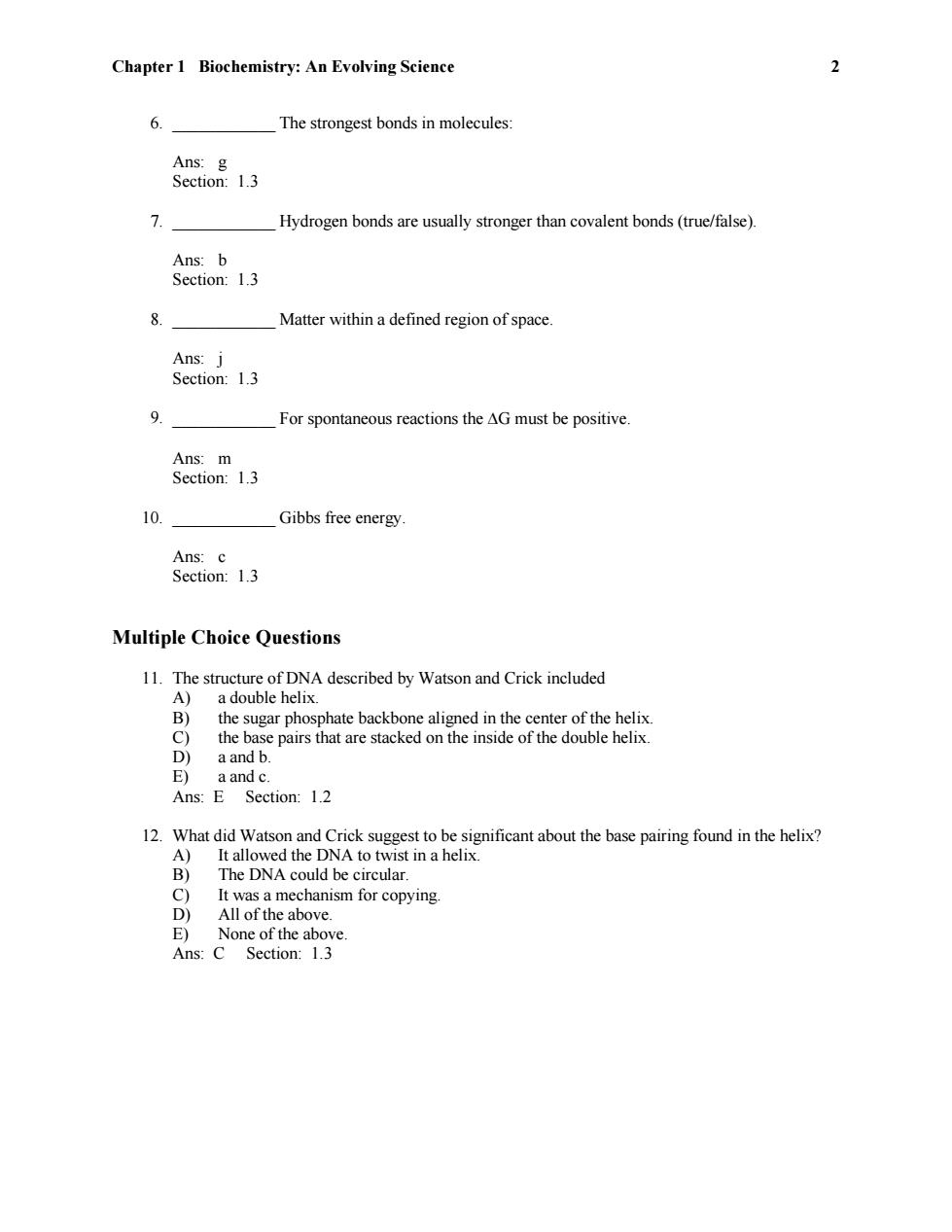正在加载图片...

Chapter 1 Biochemistry:An Evolving Science 2 6 The strongest bonds in molecules: Ans:g Section:1.3 7 Hydrogen bonds are usually stronger than covalent bonds(true/false). Ans:b Section:1.3 8 Matter within a defined region of space Ans:j Section:1.3 9 For spontaneous reactions the AG must be positive. Ans:m Section:1.3 10. Gibbs free energy. Ans:c Section:1.3 Multiple Choice Questions 11.The structure of DNA described by Watson and Crick included A) a double helix. B) the sugar phosphate backbone aligned in the center of the helix. C) the base pairs that are stacked on the inside of the double helix. D) a and b. E)a and c. Ans:E Section:1.2 12.What did Watson and Crick suggest to be significant about the base pairing found in the helix? A)It allowed the DNA to twist in a helix. B) The DNA could be circular. C It was a mechanism for copying. D) All of the above. E)None of the above. Ans:C Section:1.3Chapter 1 Biochemistry: An Evolving Science 2 6. ____________ The strongest bonds in molecules: Ans: g Section: 1.3 7. ____________ Hydrogen bonds are usually stronger than covalent bonds (true/false). Ans: b Section: 1.3 8. ____________ Matter within a defined region of space. Ans: j Section: 1.3 9. ____________ For spontaneous reactions the G must be positive. Ans: m Section: 1.3 10. ____________ Gibbs free energy. Ans: c Section: 1.3 Multiple Choice Questions 11. The structure of DNA described by Watson and Crick included A) a double helix. B) the sugar phosphate backbone aligned in the center of the helix. C) the base pairs that are stacked on the inside of the double helix. D) a and b. E) a and c. Ans: E Section: 1.2 12. What did Watson and Crick suggest to be significant about the base pairing found in the helix? A) It allowed the DNA to twist in a helix. B) The DNA could be circular. C) It was a mechanism for copying. D) All of the above. E) None of the above. Ans: C Section: 1.3